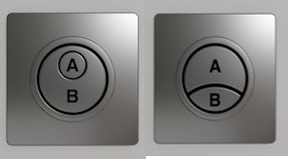 Cleanzine: your weekly cleaning and hygiene industry newsletter 18th April 2024 Issue no. 1110
Cleanzine: your weekly cleaning and hygiene industry newsletter 18th April 2024 Issue no. 1110
Your industry news - first
The original and best - for over 20 years!
We strongly recommend viewing Cleanzine full size in your web browser. Click our masthead above to visit our website version.
Welcome to the Cleanzine
![]()
The original Cleaning & Hygiene industry e-news
WRAS, the Water Regulations Approval Scheme, is using World Toilet Day tomorrow, to call for manufacturers to reach some sort of consensus when it comes to the design of dual flush systems. Having seen the many options available, I've realised we're wasting huge volumes of water as a result of there not being a national standard (let alone a global one!). Unless we can all start truly working together, we don't stand a chance of realising our goal of tackling the global sanitation crisis and providing 'sanitation for all' by 2030. Water, in many parts of the world, is a scarce commodity and we must conserve as much of it as we can if we're to provide everyone with all that they need.

Dual flush toilets were introduced to help us use only the flush water we need and while I've come across them in many countries, I've never thought deeply about the problems we're collectively causing by pressing the wrong button (or both, just to be safe!). Choosing the smaller flush saves around two litres of water. WRAS's new research featured images of 18 typical dual flush designs and the 2,000 people asked to identify the short flush buttons proved that as many as eight in 10 are inadvertently wasting water and money by pressing the wrong button. Over half incorrectly identified the short flush in five out of the 18 designs. In the worst example, 81% selected the wrong button. Even the best designs were not 100% perfect... Every single one of the designs confused at least some respondents. Scale that up to a global level and it becomes scary!
The research did highlight which types of designs were easier to understand: Clear, permanent markings, such as one droplet for the short flush and several for the long flush, are brilliant, and while most people naturally expect a smaller button to mean a smaller flush, the bigger button needs to be 1.5 times bigger than the smaller one to achieve around 80% recognition. I can't fathom the thinking behind the designs that use a larger button to produce a short flush and neither could the survey's respondents who found this the most confusing design.
If the cleaning industry can make enormous headway with colour coding systems for products and equipment, surely sanitaryware manufacturers can reach a consensus over dual flush designs - particularly when it's long been proven that symbols and pictures work far better for people of different tongues!
![]() You can also follow us on Twitter @cleanzine
You can also follow us on Twitter @cleanzine
Yours,

18th November 2021








